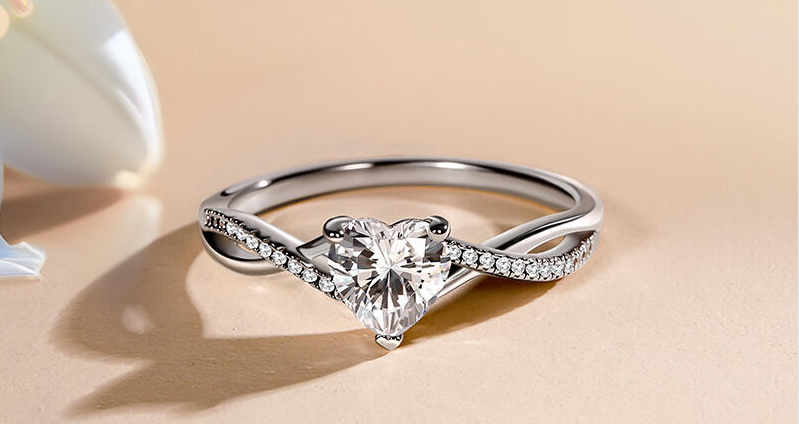
While renowned for their brilliance and ethics, a key consideration for moissanite rings is color. What do terms like “Colorless” or “Near-Colorless” actually mean? This professional guide will demystify moissanite color, ensuring you select a stone that guarantees maximum sparkle with minimal tint.
Navigate to:
What is Moissanite?
Before diving into grading, it is essential to understand the unique nature of this gemstone.
Moissanite is silicon carbide, an incredibly rare, naturally occurring mineral. It was first discovered in 1893 by Dr. Henri Moissan, encapsulated within a meteorite crater in Arizona. Because natural Moissanite is so rare—literally, stardust—virtually all jewelry-grade Moissanite today is ethically created in controlled laboratory environments.
The Properties That Matter
Moissanite is not a diamond simulant in the way Cubic Zirconia is; it is a unique gemstone with its own superior optical properties.
- Hardness: Scoring 9.25 on the Mohs scale, Moissanite is the second hardest gemstone used in jewelry, making it ideal for daily wear.
- Brilliance & Fire: Moissanite has a higher Refractive Index (2.65 to 2.69) and higher dispersion than diamond, meaning it exhibits more light return (brilliance) and more vibrant, rainbow-like flashes of color (fire).
This astonishing brilliance is precisely why color is so critical in Moissanite. Any underlying tint or warmth in the body of the stone will be amplified by its fiery light dispersion.
The Moissanite Color Grading System
Like diamonds, moissanite is evaluated on a GIA-based color scale, typically divided into three distinct categories. Understanding these helps you balance budget, size, and personal preference. The three grades include: colorless (D-E-F), near-colorless (G-H-I), and faint color (J-K). D represents the the most most coveted level of colorlessness..
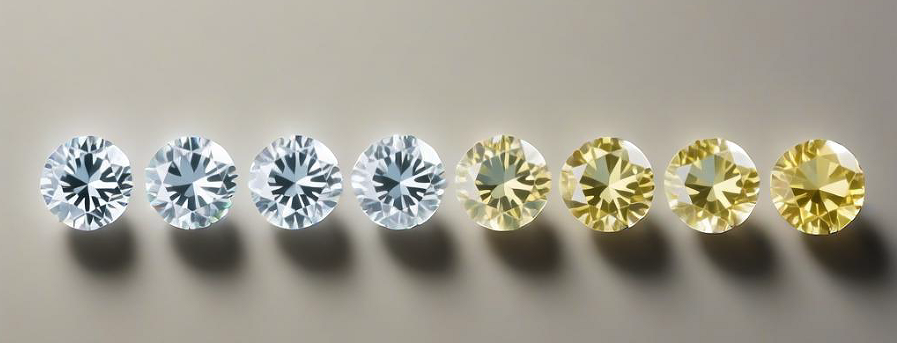
1. Colorless Grades (D-E-F)
Stones falling into the D-F range are structurally the most pure and show absolutely no discernible color when viewed face-up. When shopping for premium engagement rings or large solitaire moissanite rings, this grade is the expected standard.
- D Color: The highest possible grade, reserved for the purest stones.
- E and F Color: Also considered perfectly colorless. Any difference between D, E, or F is typically only detectable by a gemological expert using specialized equipment.
- Best for: Buyers who want the ultimate crisp white stone, or those setting the moissanite in white metals like platinum or white gold, which can sometimes emphasize any tiny hint of color in a lower-grade stone.
2. Near-Colorless Grades (G-H-I)
Stones in the G-I range exhibit a very slight, often undetectable warmth. While they appear colorless to the untrained eye, especially when mounted in white gold or platinum, they may show a pale yellow or gray hue under specific lighting conditions.
- G-I Color: Excellent value. These stones remain wonderfully white but may be noticeably more affordable than D-F grades. This subtle warmth makes moissanite rings in these grades particularly beautiful in vintage-style settings (particularly when set in yellow or rose gold, which naturally complements the warmth).
- Best for: Buyers who want a brilliant, high-quality stone on a slightly smaller budget, or those setting the stone in yellow or rose gold. The warmer metal tones naturally complement the stone’s subtle warmth, making it blend beautifully.
3. Faint Color (J-K)
While modern, high-quality vendors rarely stock moissanite in true J-K grades, these stones do exist occasionally.
- What it means: Stones in this range show a very light tint. This tint is often noticeable but can still create a beautiful, vintage look, especially when set in deeply saturated yellow gold.
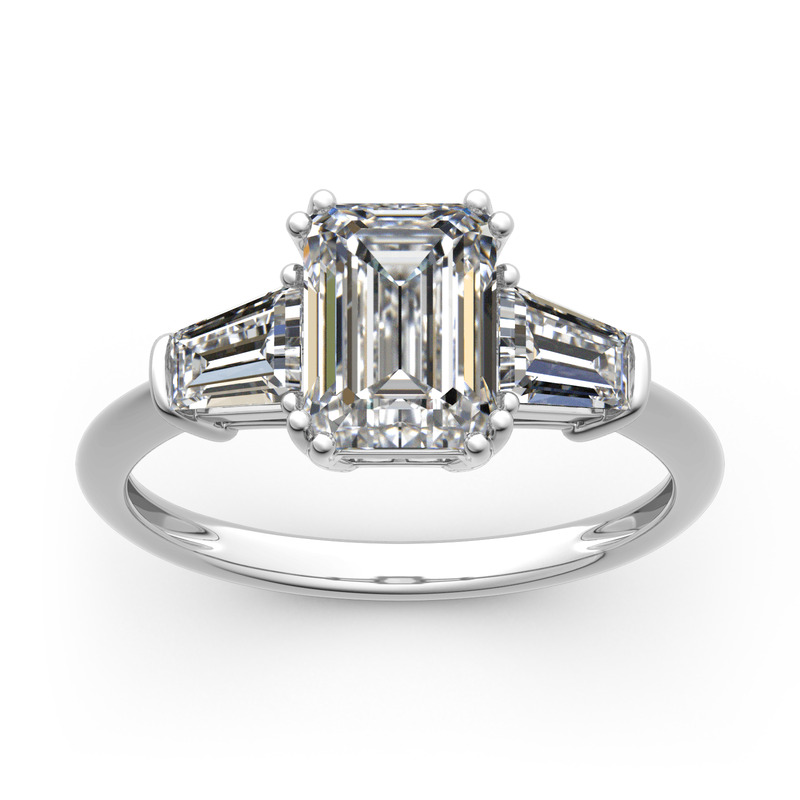
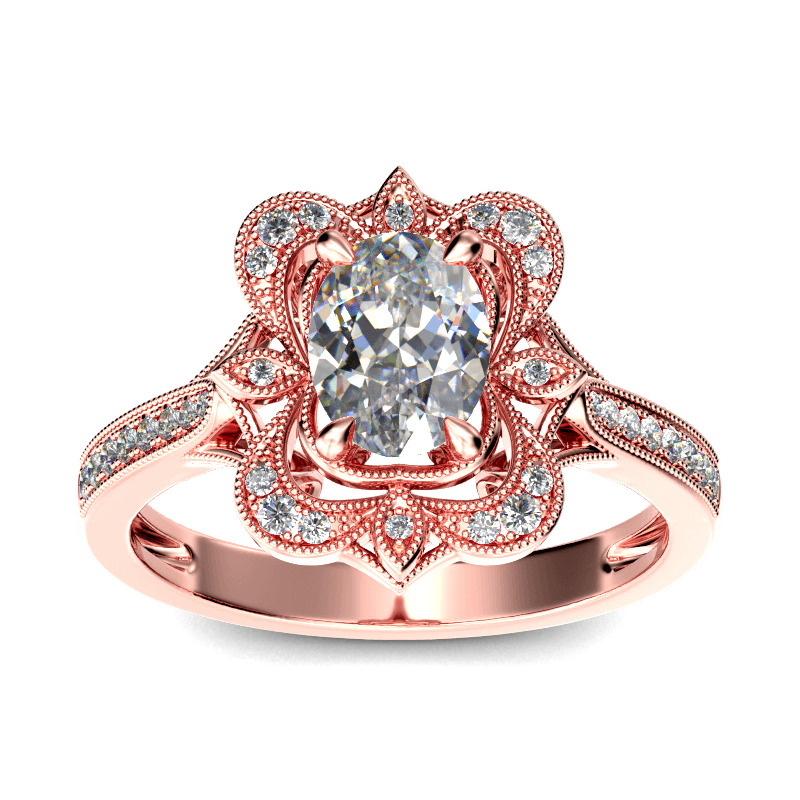
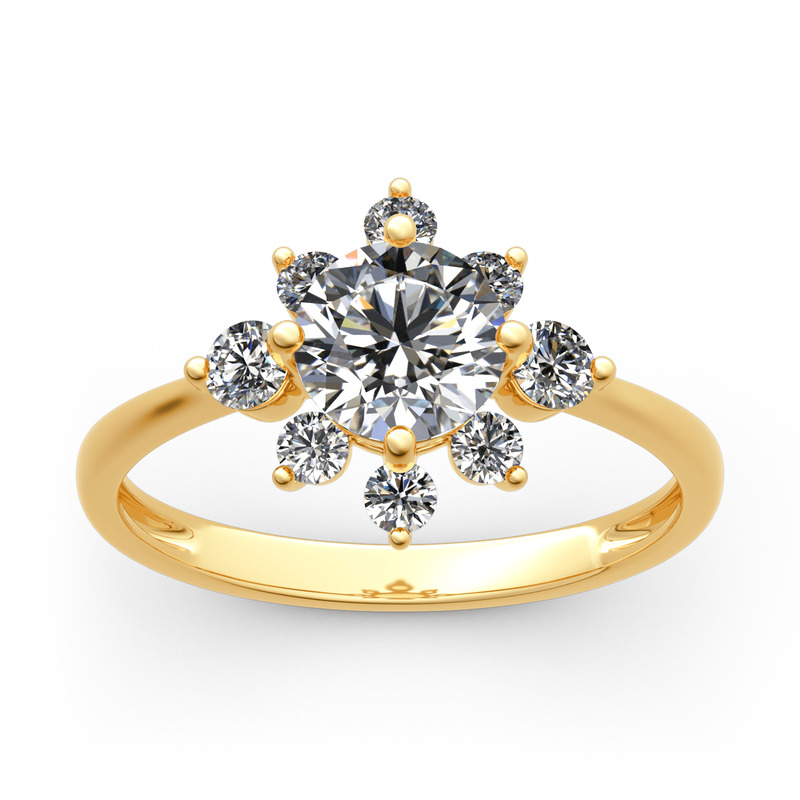
Is Moissanite Naturally Colorless?
As the grading system shows, moissanite is not naturally colorless. In fact, naturally occurring moissanite is extremely rare and typically exhibits a distinct yellow or greenish hue, often comparable to a “K” grade or lower on the GIA scale. The clear, colorless moissanite you see today is created in labs. Advanced technology allows us to produce this bright white stone, which is very popular for jewelry.
Fancy Colored Moissanite
Beyond the classic white spectrum, moissanite’s properties allow it to be created in a stunning array of fancy colors. These are not mere imitations; lab-created hues like deep grey, vibrant blue, romantic pink, and champagne gold are inherently brilliant and durable. This versatility makes fancy colored moissanite an exceptional choice for those seeking a unique centerpiece for a custom jewelry design, offering a personal touch of color without compromising on sparkle.
Does Color Grade Affect the Moissanite’s Fire?
A common question is whether color grade affects moissanite’s famous “fire”—its vibrant, rainbow flashes of light. The answer is no. This brilliance is an inherent property of moissanite’s crystal structure and is not diminished by color grade. While a D-color stone is prized for its pure whiteness, a G-color stone will exhibit the same intense sparkle. The only difference is the subtle body color, not the fire itself.
Moissanite Rings FAQs:
Q: What does “Treated Moissanite” Mean?
A: Treated moissanite typically refers to lab-created moissanite that has been altered to improve its appearance. Common treatments include laser drilling to remove internal flaws and coatings to enhance its color.
Q: Does Moissanite Color Change Over Time?
A: Moissanite is a stable and durable gemstone. Its color is intrinsic to its physical composition and will not fade or change over time, ensuring that its appearance and brilliance remain permanently intact.
Q: Is Moissanite a Real Gemstone?
A: Yes, it is recognized as a real gemstone. While extremely rare in nature, the moissanite used in jewelry such as moissanite rings, is expertly created in labs, possessing the beauty and durability of a precious stone.
Q: Does Moissanite Get Cloudy?
A: No. Unlike some gems that can haze, moissanite is permanently brilliant and resistant to clouding.
More Jeulia Post:
Moissanite vs. Lab Diamond: Unpacking the Differences
Moissanite vs. Cubic Zirconia: The Ultimate Comparison
Moissanite Rings: The Sparkling Alternative You Should Consider
